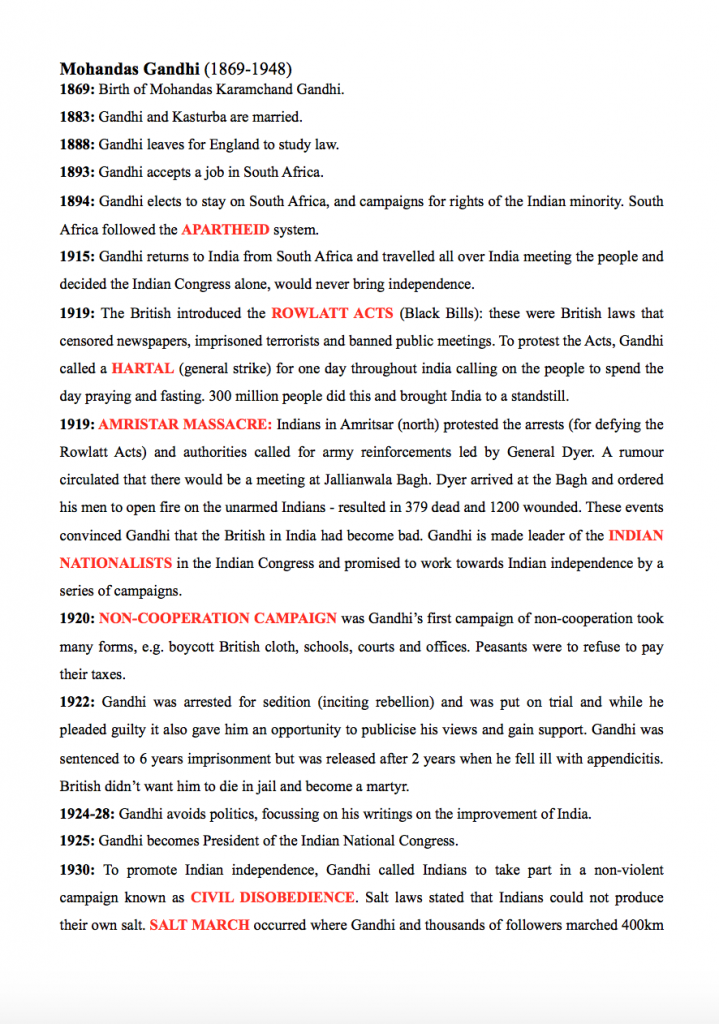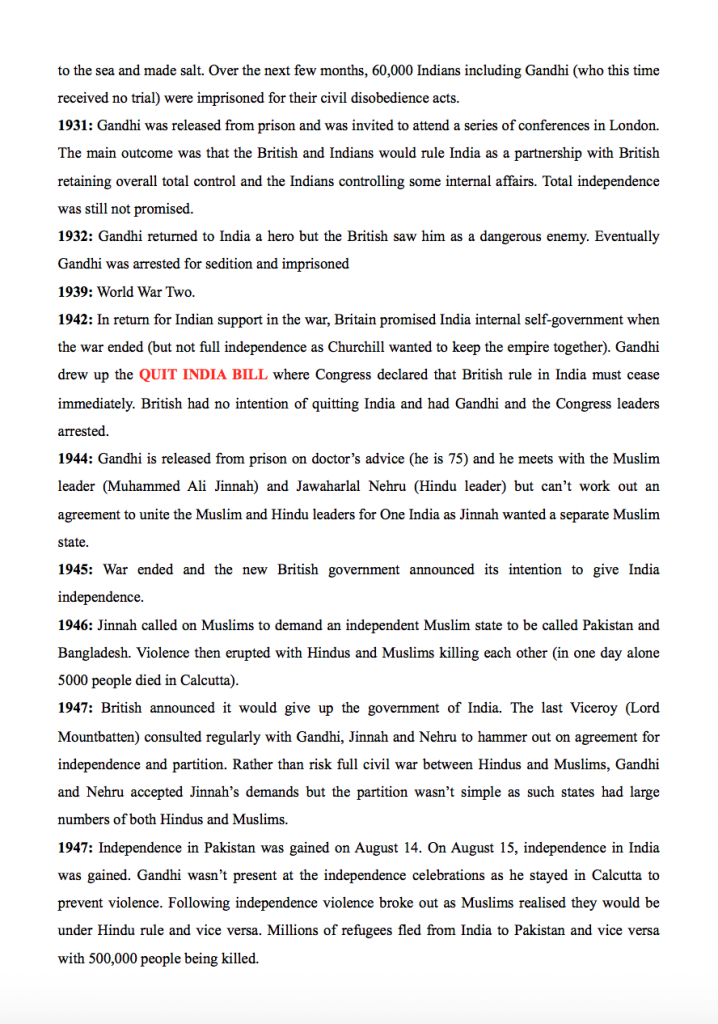A complete term’s worth of extensive Modern History notes regarding the topic of comparing Mao Zedong and Mohandas Gandhi. These notes cover, in thorough detail, the following learning intentions:
(1) Mao Zedong: an overview and timeline of Mao Zedong, including definitions such as the Qing Dynasty, Sun Yat Sen, Republic of China, Guomindang Nationalist Party, May Fourth Movement 1919, Chinese Communist Party 1921, Chiang Kai-Shek, Autumn Harvest Uprising 1927, Soviet Republic of China, the Long March, He Zizhen, Chinese Civil War, People’s Republic of China 1949, first Five Year Plan 1953-58, Hundred Flowers Campaign 1956-57, Anti-Rightest Movement 1957-59, the Great Leap Forward 1958, Liu Shaoqi, Sino-Soviet Split 1959 (de-Stalinisation), the Cultural Revolution 1966-76 and Deng Xiaoping.
(2) Mohandas Gandhi: an overview and timeline of Mohandas Gandhi, including definitions such as the Apartheid system, the 1919 Rowlatt Acts (Black Bills), Hartal, 1919 Amristar Massacre, Indian Nationalists, the 1920 Non-Cooperation Campaign, Indian National Congress, the Civil Disobedience Campaign, the Salt March, the 1942 Quit India Bill, significance of Muhammed Ali Jinnah and Jawaharlal Nehru, 1946 Calcutta Massacre, Viceroy Lord Mountbatten, independence of Pakistan and the assassination of Gandhi.
(3) Use of Violence: comparing the use and attitude of violence between the two leaders. Gandhi followed the doctrine of the Satyagraha Movement and philosophy and began commitment of ahimsa. Mao led the 1927 Autumn Harvest Uprising, use of violence included the Cultural Revolution, Hundred Flowers Campaign, collectivisation and his belief that the army is the chief component of the plower power of the state (axiom that Mao took from Marxism to attained the desired social change) and the importance of Lin Piao.
(4) Marches: a comparison of the Long March led by Mao and the Salt March led by Gandhi, including terms such as Civil Disobedience and the significance of Viceroy Irwin in the Salt March and Zhou Enlai in the Long March. Both Gandhi and Mao had an opportunity to test their philosophies and methods of resistance in the 1930s by leading mass movements (in the form of marches) against their respective opponents.
(5) Approach to Development: an in-depth comparison of both leader’s approach to development. For Mao, following the western path meant his people would fall into a continuing subservient role to Western Imperialists. For Gandhi, following the western path meant mindless materialism and the worship of products and consumption.
(6) Attitudes to Wealth Distribution and the Rich: Mao’s attitudes lead to the introduction of the Dictatorship of the Proletariat and in 1957 he introduced agricultural communes that was called a Democratic Dictatorship. Gandhi never tried to separate the rich and poor, including key terms such as his Phoenix Ashram Experiment in 1906 and the significance of the Zamindars and Talukdars.
(7) Approaches to Reform: an overview of each leader’s approach to reform, particularly Mao’s introduction of the Commune Movement (collectivised farming) in the 1950s and Gandhi’s challenge of the eradication of untouchability.



Reviews